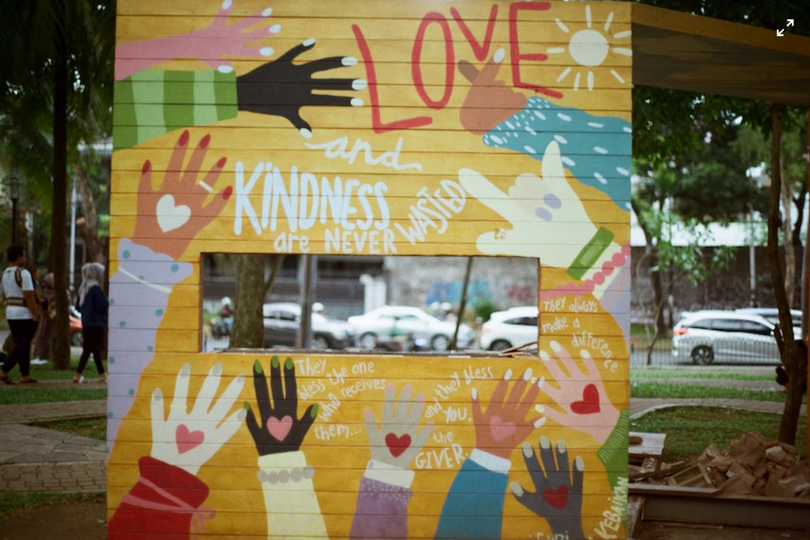According to the teachings of the Bible, the church encourages Christians to participate in community welfare activities. Although many churches and Christians in China are passionate, they gradually lose their enthusiasm after participating in community services and public welfare activities for a year or two. Mr. G, who has provided consulting services for small charity organizations and individuals for many years, shared his perspectives on this issue recently.
Mr. G is a Christian. At the beginning of 2008, a severe snowstorm in the south caused many migrant workers stranded at the train station and unable to go home for the Chinese New Year. That was the inception of Mr. G’s community services. Thereafter, he joined the Wenchuan Earthquake relief and other activities. He witnessed many zealous organizations and individuals stagnate for various reasons in their practices. He stated frankly, “There are numerous unsuccessful cases of churches and believers in providing community services. These cases include not only those that discontinue their services halfway but also those that remain but have lost their vitality.”
Reasons for failing in the initial stage
According to Mr. G, churches and Christians are not professional enough to provide community services. It is prone to failure in the initial stage.
The main reasons are as follows: The initiators have impure motives and their own agenda. In particular, churches and Christians tend to regard community services as a means of "evangelizing" or testimony-sharing opportunities. Because they do not provide services as an end, their enthusiasm is likely to diminish when they do not see the results of evangelism. Some are passionate about community services but do not want to play by the rules. Neither do they engage themselves in professional development. Little by little, they come to a stop. Some simply duplicate others’ work to save effort. They have learned on the superficial level but not the essence. Without seeing the results, they gradually stagnate after a year or two.
The reason to fall after getting on the right track
Even after charities or public welfare organizations are established, they could run into bottlenecks at a later stage. Here are some reasons for charity organizations and individual teams are unable to sustain their growth.
1. Leadership development
If an organization is dominated by one individual, no one else could take over when this person leaves the leadership position. Without a leadership successor, it will be difficult for the team to continue. Because there is so much business to attend to, it is not uncommon for leaders to be occupied by business and overlook the development and training of new leadership.
It could also be a deficit in leadership influence, which causes the followers to quit. For instance, the leader has problems with finances, marriage, or character.
2. Volunteers’ enthusiasm decreases due to negative feedback
Volunteers will definitely receive much negative feedback while providing community services. Any negative emotions and thoughts should be resolved. If the "garbage" is not cleaned up timely, it would be detrimental to the service providers themselves. The zeal and love of the service providers are vulnerable. They might be misunderstood, wronged, discredited, defamed, or falsely accused. Besides, these volunteers make mistakes like everyone else. All these would lead to a decline in enthusiasm to serve.
3. The issue of trust
People today are guarded and not receptive to services due to a lack of trust in each other. To resolve the trust issue, it is critical to find those who can help people open up to run the service.
4. The factor of social changes
As social changes occur rapidly, the population served is also constantly changing. The programs provided need to be tailored accordingly. It is difficult for the original program to last beyond three to five years in general. Another situation that is set up to fail is when the program is duplicated to serve another community without taking into consideration the different population structures.
5. Resources
Resources are a bottleneck that community service teams and institutions will inevitably face in the long-term development.
Three stages of the establishment of community service organizations
From a consultant’s perspective, Mr. G indicated that the process of initiating a service program can be roughly divided into three stages: mobilization, action, and team building (including registration).
He stated that mobilizing the community is the first step to establish a healthy community service organization. "Mobilizing" does not simply resort to "emotions." Rather, it is to help people understand the meaning of life and to examine their motives for providing services. "Preaching the gospel" or gaining other benefits ought not to be the goal of service programs for Christians. He emphasized, "If the motive is not pure, the organization will not go far."
Secondly, Mr. G suggested that action should be followed by registration for the next stage of establishment. In his opinion, it is important to put ideas into practice. Find the sweet spot and take action. Be specific and concrete. For example, a haircut service, meal delivery, or a moving service for a specific population. After the projects are implemented and practiced for a period of time, people will find their specialty areas. Subsequently, they can choose to be certified or receive professional training based on their gift and expertise.
Mr. G specifically pointed out, "Certification may not work for some people, but they can do things that others can't. There is no need to force them to be certified. Before a specific project is identified, avoid seeking certifications and registration blindly. The tedious preparatory work in the process may wear down some people's confidence and passion. Registration is optional even after the team is well established. If it is only a small-scale community service that does not cross communities, being flexible is desirable. For the teams that choose to register, we can also provide assistance to avoid detours."
Stable organizations maintain a healthy growth
Mr. G indicated that even after a service team is well established, professional guidance is still needed to provide consultation and leadership training and help resolve negative emotions. These will prevent the organizations from falling behind.
"After establishing a stable team, we need to consider how to promote healthy development. For example, how to get the support of the government and the church, how to transition when necessary, how to deal with failure, shortage of funds and resources, and organizational management issues, etc. Community services could be sparked by passion, but they need rational thinking to be the backing support. Rational thinking is a must. Many problems cannot be solved with passion but with rational thinking. That is why leadership training is required, and so are organizational management courses.” Mr. G added.
In addition, healthy development will go through transition and transformation. For instance, many teams were organized for earthquake relief. However, disaster relief is time specific and cannot be an everyday regular practice. Mr. G witnessed that charity teams formed because of the Wenchuan Earthquake in 2008. Those who persist until today have all undergone some transformation.
Mr. G advocated that the service should be continuously deepened. He explained, "When we provide services, we will find that we can't just solve the superficial problems. Many times, there are underlying reasons or causes. For instance, the lonely elderly need not only material resources but genuine care; Taking care of employment problems for some people is more effective than simply giving them food. A project might initially start with providing supplies, but the service content needs to be transformed at a later stage. When tree leaves are wilting, it’s most likely that the root has a problem. We must learn the root cause of superficial problems. If the underlying need is addressed, the service could create a once-and-for-all impact.”
Mr. G also pointed out that the services for underlying causes can prevent problems from escalating. He gave us an example. To help a person (or a region) in poverty, we must think about whether there are spiritual and psychological reasons behind their poverty besides meeting their physical needs. If what people need is spiritual or psychological, material provision alone cannot solve any problems. Instead, it will grow people who are poor in spirit and mind.
- Translated by June I. Chen












